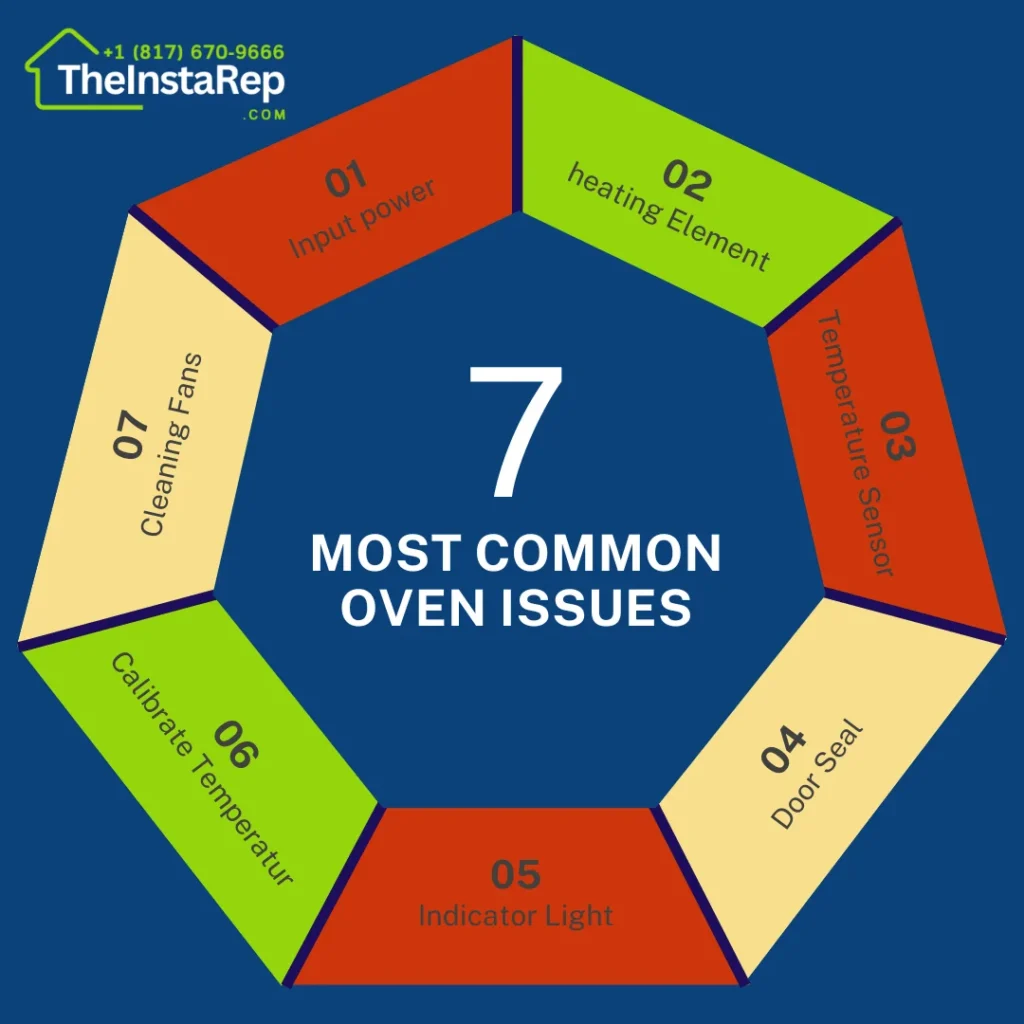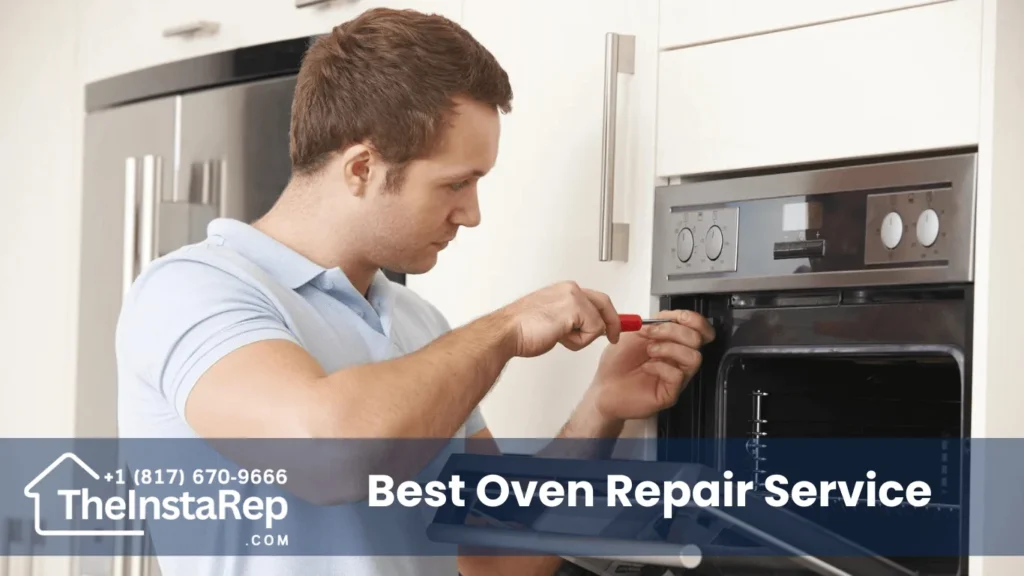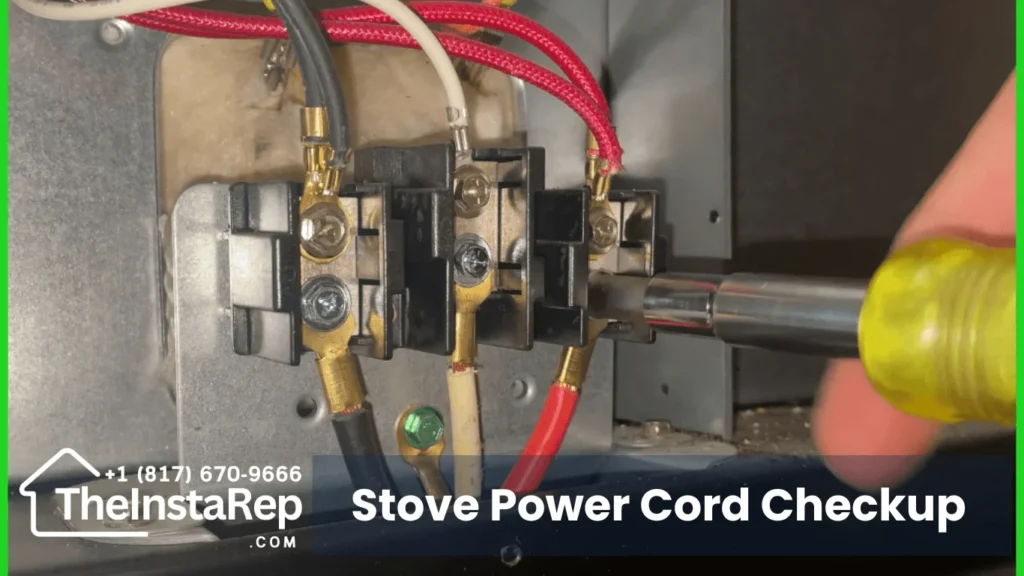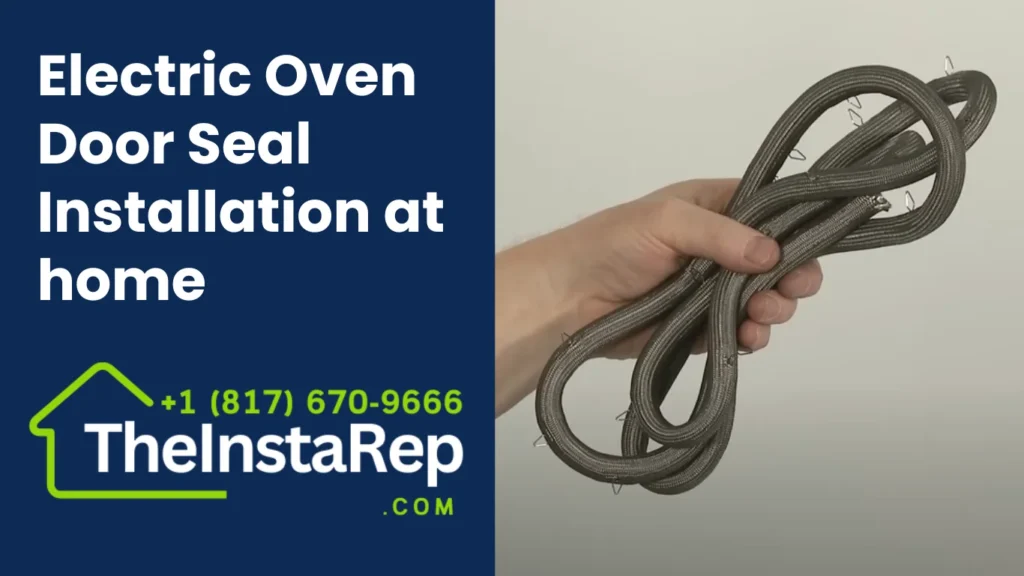7 Most Common Oven Issues and How to Troubleshoot Them
Here is a quick guide on how to fix common oven issues. Check power, heating elements, and sensors for no heat. Ensure rack placement and cleaning for even cooking. Fix door closures, replace light bulbs, calibrate temperature, and clean fans. When in doubt, call a professional.

Oven Issues with Their Solutions
| Issues | Solution |
|---|---|
| input Power | Damaged wiring, Moisture, Faulty Switch |
| Heating Element | Power Supply or Cord, Continuity Check |
| Temperature Sensor | Sensor and its wiring |
| Oven Door Seal | Door Seal, Door Hinges, Screw check |
| Indicator Light | Element, Switch, its connections |
| Calibrate Temperature | Control knobs, lights and control borad |
| Cleaning Fans | Power supply, wiring, control board |
An oven is a valuable appliance for daily cooking chores. Whether cooking dinner for a family or firing up the oven to make a batch of cookies, a straightforward problem can send the cook into a tailspin. If the oven fails to heat, preheat, get hot enough, or doesn’t cook anything to your satisfaction, it can lead to discomfort.
At TheInstaRep, we help you fix oven issues. We are professional technicians with over a decade of experience. If you think the problem is complicated, contact us for free advice and consultation.
Book FREE Consultation visit at your doorstep!
Common issues, such as the oven not heating or cooking unevenly, can be fixed with the correct SOPs. In this article, I’ll guide you through the most common oven problems at home. Follow the easy steps, and you’ll be done.
7 Top Oven Problems and How to Fix Them
1. Oven Not Heating
Is your oven not heating? First, check it has power, plug it in, and see if a circuit breaker has tripped; now, try plugging the oven back in. Then, check the heating elements, which should glow red when the oven is on. If they are damaged or not glowing, they need to be replaced.
The next thing to check is the temperature sensor, which controls the oven’s temperature. You will need to use an ohmmeter to test it. If it’s faulty, it can be recalibrated after replacement. If this still doesn’t solve the problem, then it would be advisable to contact TheInstaRep technician to come to your home and replace the relay.

2. The Oven is Not Cooking Evenly
Reason 1: Oven Racks
When your oven doesn’t cook food evenly, it can be frustrating. The first thing to do is check your oven racks. Uneven cooking can result from improper oven rack placement, leading to overcooked food on one side and undercooked on the other.
Refer to your oven manufacturer’s manual for safe and effective rack placement guidance. After making sure your oven racks are correctly placed, clean your oven.
Reason 2: Oven Fan
Grease and food debris can create a log jam in your oven, which blocks your oven from cooking food evenly. If you continue to have issues with your oven not baking foods evenly, then your oven fan could be a contributing factor.
A burnt-out or broken fan cannot adequately circulate hot air throughout the oven. To test this, ensure your food is cooked, and the oven is turned off. Turn the oven on and listen to the fan. Be sure to put on ear or eye protection in case anything breaks. If you hear a loud noise and the fan stops, your fan might be burnt out.

3. Oven Door Won’t Close Properly
If the oven door does not close correctly, it cannot cook a large meal or bake cookies; fixing it can restore the oven’s efficiency.
Book FREE Consultation visit at your doorstep!
4. The Oven Light is Not Working
If your oven light doesn’t work, it isn’t easy to monitor your food unless you want to keep opening the door and lose heat. The first thing to do is change the oven light bulb—this is probably the most straightforward option if this is the cause of the problem.
If your new oven light bulb doesn’t work, check the light socket for damage or corrosion. If everything looks OK, yet your light doesn’t work, this could be down to the control board; it might be better to call a professional.

5. Oven Temperature Inaccurate
If your oven temperature is inaccurate, this can lead to your meals getting undercooked or burnt. Begin by calibrating your oven’s thermostat. Usually, the oven will have an actual calibration dial or a digital calibration feature you can find within the oven’s settings.
Check your oven’s manual for detailed instructions. Next, you’ll want to check the temperature sensor, which can be tested using an ohmmeter. If the temperature sensor is wrong, you can replace it.
Another common problem may be the oven control board. This board controls the oven’s functions, and if it’s malfunctioning, this may cause your temperature inaccuracies. You can diagnose a faulty control board by substituting it with a functioning one to see if temperatures become more accurate.
If you have issues fixing the oven control board and cannot fix it at home, it is better to contact TheInstaRep for professional help.
6. Oven Self-Cleaning Function Not Working
A non-working self-cleaning cycle will provide a hassle. First, make sure the oven door is locked correctly. Before starting the self-cleaning cycle, the oven door should be securely shut. If the door is closed and the self-cleaning cycle doesn’t start, check the oven control panel for any error codes. Reset the oven as explained in the owner’s manual.
The problem could be as simple as the door latch or the oven door switches. For faulty door latches and switches, inspect these components for any visible damage or wear. Replacing a bad latch or switch can often restore the self-clean feature.
7. Strange Noises from the Oven
All of these noises from your oven can be unnerving. Sounds such as tics and clicking noises often indicate loose components. Check to make sure there are no overtly loose components. If you see any screws or bolts that need tightening, go ahead and do so.
If you still hear the noises, check for the oven fan. A dirty or faulty fan can make unusual sounds from this appliance. Clean the fan thoroughly. Check to see if the clean fan spins freely. If not, the motor or bearings can be damaged and replaced.
remember!
If you have checked the oven fan and tightened screws and bolts and are still hearing these noises, you may have a more severe problem with your oven, such as issues with internal parts, and should bring in a professional.
Fixing sound issues at home can be tricky; however, with our assistance, it can be easy. If you need advice, contact TheInstaRep.
Book FREE Consultation visit at your doorstep!
Conclusion
Oven problems can be aggravating, but quite often, there are straightforward ways to deal with them by yourself at home. With knowledge of the most common issues and their solutions, you can avoid spending too much time on unnecessary repairs.
However, when troubleshooting your oven, always follow the safety guidelines and carefully read your oven’s manual, as it will contain specific instructions for your device.
At the same time, if you cannot detect a problem, it’s better to contact the brand’s support or call TheInstaRep for professional help.
